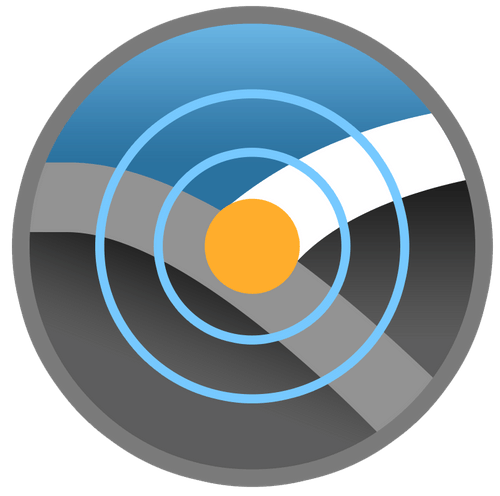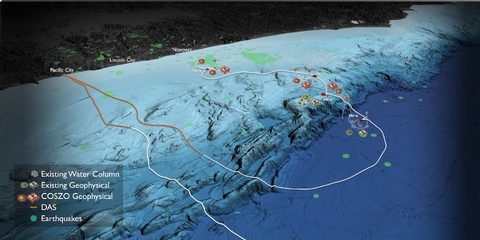Infrastructure
The Ocean Observatories Initiative (OOI) Regional Cabled Array (RCA) has been operational since 2015 and consists of two telecommunication cables extending offshore from Pacific City, Oregon. One crosses the Juan de Fuca plate to Axial Seamount (an undersea volcano located about 300 miles offshore) and the other extends into deep water (about 9500 feet) and then wraps back to the south onto the continental slope and shelf off Newport, Oregon. There are seven nodes along the cable that host a variety of instrumentation at small seafloor substations.
Off the coast of Oregon, the OOI RCA has four nodes: One at the slope base on the subducting Juan de Fuca plate, two on the continental slope, and one on the outer continental shelf. Long extension cables connect two more sites on the Southern Hydrate Ridge (SHR) and the Oregon shelf. The Oregon Shelf site is located directly on top of one of two clusters of earthquakes offshore Oregon. Currently, geophysical instrumentation is limited to the broadband seismometers, absolute pressure gauges, low-frequency hydrophones, and current meters at the slope base and SHR nodes. There are also three short-period seismometers at SHR.
The COSZO project will add an ocean bottom seismic (OBS) package (broadband seismometer, strong-motion accelerometer, and digital recorder), low-frequency hydrophone, Differential Pressure Gauge, absolute pressure gauge, ocean current meter, and Geodetic and Seismic Sensor Module to the two continental slope and continental shelf sites. A Self-Calibrating Pressure Recorder will also be installed at the two continental slope sites and an OBS package plus low-frequency hydrophone and Differential Pressure Gauge will be added to the Oregon Shelf site.



